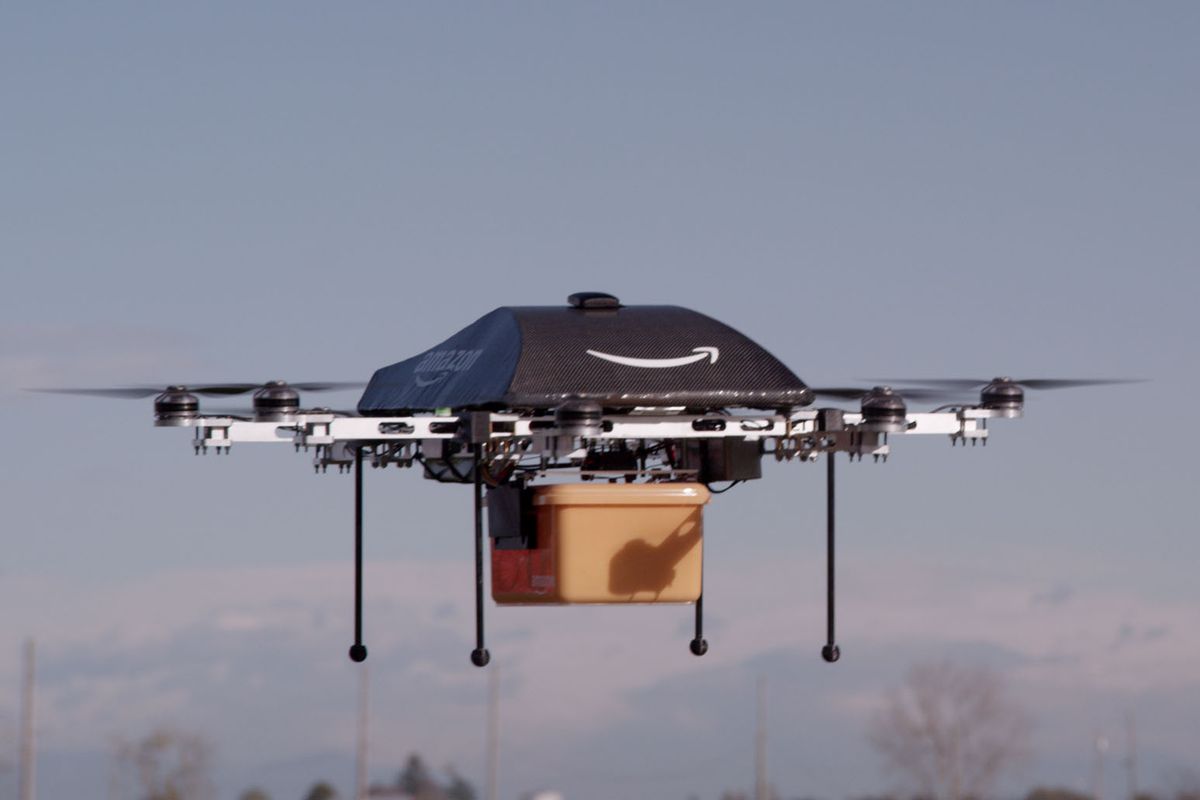Drones

Amazon Prime Air
Amazon wants to keep us safe with self-destructing delivery drones
'This drone will self-destruct in five, four, three...'

'This drone will self-destruct in five, four, three...'
Amazon is investigating ways for its autonomous delivery drones to self-destruct and disintegrate in midair in the event of a power failure, preventing damage to property and injuries to bystanders below.
Instead of drones striking the ground —or a person — a drone would jettison its components after detecting a problem, reducing its weight and the force of any impact.
This is an important consideration for Amazon to make, as the delivery drones it is currently testing weigh in the region of 55 pounds unladen and can carry a payload of five pounds.
They can fly at up to 50mph and within a 10 mile range of a warehouse, to which they return to recharge and collect their next package after each delivery. Amazon is testing drones with a handful of Prime Air customers in the rural outskirts of Cambridge, England.
Called "direct fragmentation for unmanned airborne vehicles (UAVs)", the patent describes how a malfunctioning drone would fall apart before striking the ground. Amazon says in the patent filing: "The fragmentation sequence includes a release timing and a release location to fragment away (eg, release, drop, jettison, eject etc. away) one or more UAV components in case the flight operation of the UAV is disrupted."

The patent suggests Amazon is concerned about the effect severe weather could have on its delivery drones. Situations where the disintegration system would be used include "unexpected heat, cold, wind, rain, hail, high or low pressure regions, or other meteorological conditions."
Such weather events could damage the drone's rotors or electronics, overheat or freeze the motors and batteries, or cause its positioning sensors to fail, endangering people below its flightpath.
As companies invest in future drone-based services, regulators have expressed concern over the safety of the skies being full of autonomous, crashable and hackable UAVs.
'Drone payloads can cause serious injury'
A study by the Federal Aviation Administration said earlier in 2017 that a drone payload of five pounds "could cause serious injury."
In 2015, downhill skiing world champion Marcel Hirscher was almost struck by a camera drone, below, while competing at an event in Italy.
Rather than exploding into tiny, unsalvageable pieces, the Amazon patent suggests drones would jettison different components depending on the circumstances. By losing parts, Amazon says the "weight, speed, air drag coefficient, and other factors related to the UAV can be altered."
As the patent explains: "The UAV includes a flight controller and a fragmentation controller. The flight controller determines a flight path...the fragmentation controller develops a fragmentation sequence for one or more of the components based on the flight path, the flight conditions, and terrain topology information, among other factors."
Amazon says relevant drone components include one or more motors, plus batteries, sensors, a housing, casing or shell, and the payload.
GearBrain Compatibility Find Engine
A pioneering recommendation platform where you can research,
discover, buy, and learn how to connect and optimize smart devices.
Join our community! Ask and answer questions about smart devices and save yours in My Gear.
